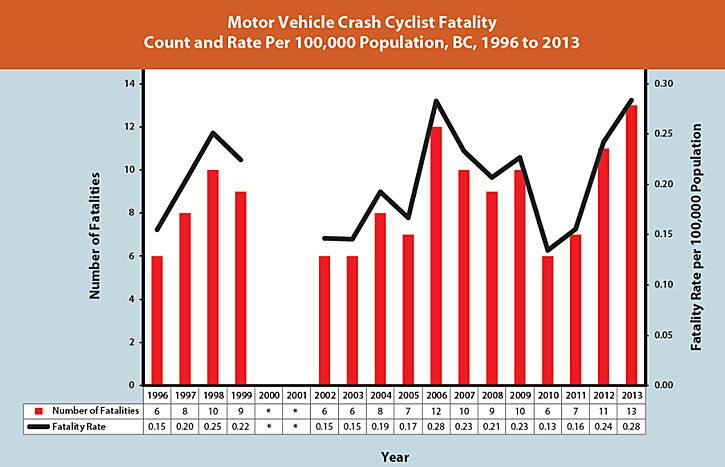Transportation Minister Todd Stone has ruled out a return of photo radar and lowering urban speed limits to help reduce motor vehicle fatalities.
Provincial Health Officer Perry Kendall recommends in a new report that urban areas should have a default speed limit of 30 km/h to protect pedestrians and cyclists from fatal collisions.
Safer roads and vehicles have reduced fatalities for vehicle occupants by almost 80 per cent in the past 40 years, but the death rate for pedestrians has remained stubbornly high, and cyclist fatalities have gone up as more people take to bikes in urban areas, the report says.
Kendall said when a pedestrian is struck by a car travelling 50 km/h, the chances of survival are only 20 per cent. When the vehicle speed is reduced to 30, a pedestrian has about a 90 per cent chance of surviving a direct impact.
The current default speed limit for streets in B.C. is 50 km/h, and that includes urban streets where vehicles may be parked on both sides and drivers have little time to see a pedestrian stepping out. Currently municipalities have to post signs to establish a lower limit for any selected street.
Stone said Thursday the idea of lowering default municipal speed limits from 50 to 40 was debated at last year’s Union of B.C. Municipalities convention, and “quite resoundingly defeated.” He said there would have to be a significant change in position of local governments before he would consider it.
The report also recommends the province consider returning to photo radar speed enforcement, and Stone restated the B.C. government’s long-standing position against it.
“We believe there are more effective technologies that can be employed, and frankly a better way to utilize precious police resources than to resurrect what was largely a failed photo radar program that was nothing more than a tax grab for British Columbians,” Stone said.
One of those technologies is electronic speed limit signs that can be changed remotely to reflect weather conditions.
Stone said the ministry is close to activating its first three locations for electronic speed enforcement, on Highway 1 west of Revelstoke, Highway 5 north of Hope and Highway 99 between Squamish and Whistler.
